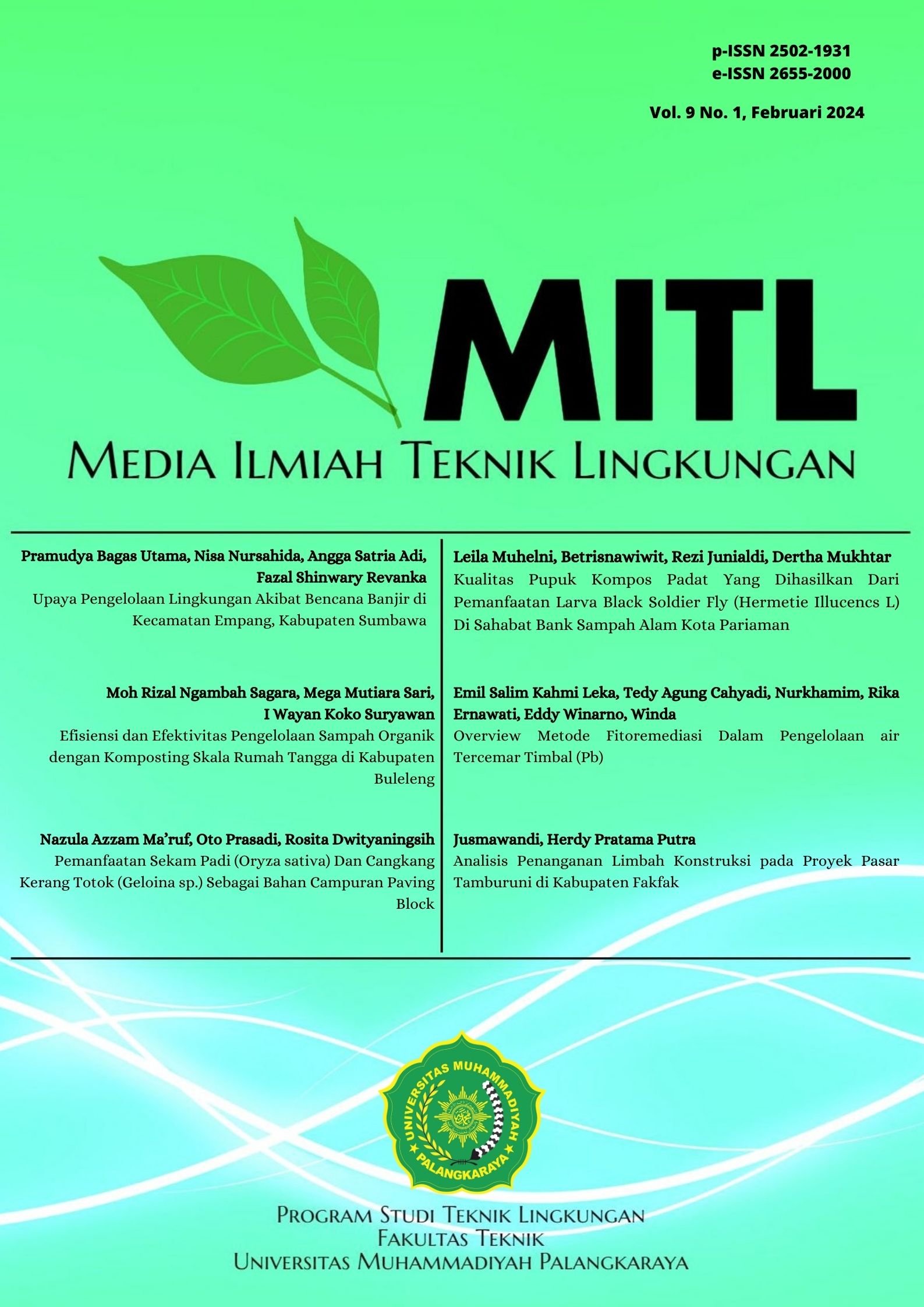Upaya Pengelolaan Lingkungan Akibat Bencana Banjir di Kecamatan Empang, Kabupaten Sumbawa Environmental Management Efforts Due to Flood Disasters in Empang District, Sumbawa Regency
Main Article Content
Abstract
Indonesia is a country that is prone to natural disasters from a geological perspective. Based on information from the Head of the Information Data Center and Public Relations of the National Disaster Management Agency, natural disaster trends have increased by 350% in the last three decades. A significant increase is hydrometeorological disasters which are influenced by weather aspects, such as floods, landslides, tornadoes, and droughts. Sumbawa Regency is one of the areas in Indonesia that is being hit by an increasing trend of natural disasters. The most recent natural disaster that hit one of the Sumbawa Regency areas was the flood disaster in Empang District. The cause of flooding itself can occur due to various things both natural and human. Floods can be caused by natural events such as rainfall over a long period of time, soil flooding leaving only rocks, and no water absorption. Therefore it is essential to analyze the flood disaster that occurred in Empang District so that a good environmental management strategy can be carried out. The management carried out is to restore environmental functions that have been lost due to damage caused by the disaster. Installing drainage and implementing the Internet of Things in overcoming flooding is considered to be quite effective. The relocation and reclamation activities of corn plantation areas carried out by bioremediation and revegetation processes can improve land conditions.
Downloads
Article Details

This work is licensed under a Creative Commons Attribution-ShareAlike 4.0 International License.
All rights reserved. This publication may be reproduced, stored in a retrieval system, or transmitted in any form or by any means, electronic, mechanical, photocopying, recording.
References
S. A. T. Cahyono and P. N. Probokusumo, Pengkajian Manajemen Penanggulangan Korban Bencana pada Masyarakat di Daerah Rawan Bencana Alam dalam Era Otonomi Daerah. Yogyakarta: Departemen Sosial RIS., Yogyakarta: Departemen Sosial RI, 2002.
W. W. Santosa, A. Suprayogi and B. Sudarsono , "Kajian Pemetaan Tingkat Kerawanan Banjir Dengan Menggunakan Sistem Informasi Geografis (Studi Kasus: DAS Beringin, Kota Semarang)," Jurnal Geodesi Undip, vol. 4, no. 2, pp. 185-190, 2015. URL: https://ejournal3.undip.ac.id/index.php/geodesi/article/view/8518/8282
Suprapto, Statistik Pemodelan Bencana Banjir Indonesia (Kejadian 2002 - 2010), 2011.
Arifin and I. N. A. Rachman, " Identifikasi Jenis Pakan Lebah Madu Hutan (Apisdorsata) Di Hutan Lindung Kesatuan Pengelolaan Hutan Lindung (KPHL) Ampang Kecamatan Empang Kabupaten Sumbawa Tahun 2020," Jurnal Silva Simalas, vol. 3, no. 2, pp. 76-85, 2020. URL: https://doi.org/10.33394/jss.v3i2.3694
D. Mutmainnah, I. W. Ayu and A. M. Oklima, "Analisis Tanah Untuk Indikator Tingkat Ketersediaan Lengas Tanah di Lahan Kering Kecamatan Empang," Jurnal Agroteknologi, vol. 1, no. 1, pp. 27-38, 2021. URL: http://e-journallppmunsa.ac.id/index.php/agroteknologi/article/view/383
S. Maro'ah, "Kajian Laju Infiltrasi dan Permeabilitas Tanah pada Beberapa Model Tanaman (Studi Kasus Sub DAS Keduang, Wonogiri)," Universitas Sebelas Maret., Surakarta, 2011.
M. Helmers, R. Christianson, G. Brenneman, D. Lockett and C. Pederson, "Helmer, M., Christianson, R., Brenneman, G., Locker, dan Pederson, C. 2014. Water Table, Drainage, and Yield Response to Drainage Water Management in Southeast lowa," Journal of Soil and Water Conservation, vol. 67, no. 6, pp. 495-501, 2012. URL: https://doi.org/10.2489/jswc.67.6.495
K.-Y. Jung, E. Yun, K. Park, Y. Lee, J. Hwang and E. Ramos, "Effect of Subsurface Drainage for Multiple Land Use in Sloping Paddy Fields," in 19th World Congress of Soil Science, Soil Solutions for a Changing World, 2010. URL: https://api.semanticscholar.org/CorpusID:131384128
I. M. Sudarma, "Analisis Karakteristik Teknik Geosynthetics Untuk Perencanaan," Jurnal Teknik Gradien, vol. 12, no. 1, pp. 16-27, 2020. URL: https://doi.org/10.47329/teknikgradien.v12i1.444
